Related Research Articles

Girolamo Aleandro was an Italian cardinal.
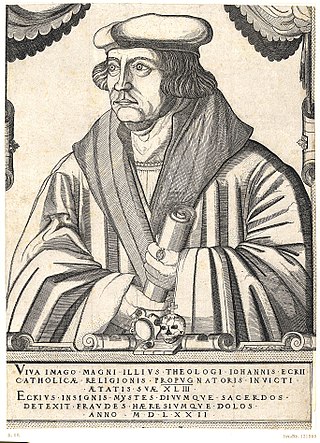
Johann Maier von Eck, often anglicized as John Eck, was a German Catholic theologian, scholastic, prelate, and a pioneer of the counter-reformation who was among Martin Luther's most important interlocutors and theological opponents.
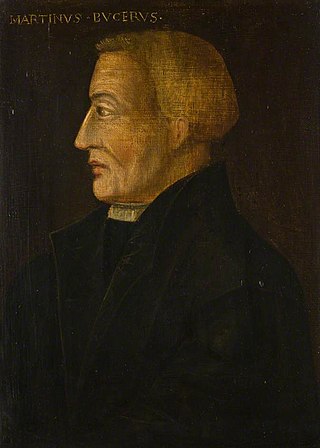
Martin Bucer was a German Protestant reformer based in Strasbourg who influenced Lutheran, Calvinist, and Anglican doctrines and practices. Bucer was originally a member of the Dominican Order, but after meeting and being influenced by Martin Luther in 1518 he arranged for his monastic vows to be annulled. He then began to work for the Reformation, with the support of Franz von Sickingen.

Wolfgang Fabricius Capito was a German Protestant reformer in the Calvinist tradition.
This article contains information about the literary events and publications of 1520.

Mathis der Maler is an opera by Paul Hindemith. The work's protagonist, Matthias Grünewald, was a historical figure who flourished during the Reformation, and whose art, in particular the Isenheim Altarpiece, inspired many creative figures in the early 20th century.

Exsurge Domine is a papal bull promulgated on 15 June 1520 by Pope Leo X. It was written in response to the teachings of Martin Luther which opposed the views of the Catholic Church. The bull censured forty-one propositions summarised from Luther's writings, and threatened him with excommunication unless he recanted within a sixty-day period commencing upon the publication of the bull in Saxony and its neighboring regions.
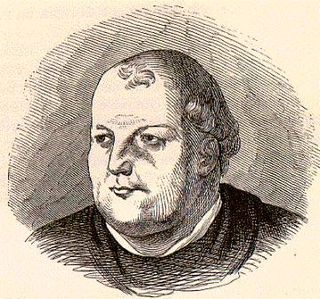
Johann von Staupitz was a German Catholic priest and theologian, university preacher, and Vicar General of the Augustinian friars in Germany, who supervised Martin Luther during a critical period in his spiritual life. Martin Luther himself remarked, "If it had not been for Dr. Staupitz, I should have sunk in hell." Although he remained Catholic, died as a Benedictine monk and had repudiated the Reformation, he is commemorated on 8 November as a priest in the Calendar of Saints of the Lutheran Church–Missouri Synod.

The Luther seal or Luther rose is a widely recognized symbol for Lutheranism. It was the seal that was designed for Martin Luther at the behest of John Frederick of Saxony in 1530, while Luther was staying at the Coburg Fortress during the Diet of Augsburg. Lazarus Spengler, to whom Luther wrote his interpretation below, sent Luther a drawing of this seal. Luther saw it as a compendium or expression of his theology and faith, which he used to authorize his correspondence. Luther informed Philipp Melanchthon on 15 September 1530, that the Prince had personally visited him in the Coburg fortress and presented him with a signet ring, presumably displaying the seal.
Karl von Miltitz was a papal nuncio and a Mainz Cathedral canon.
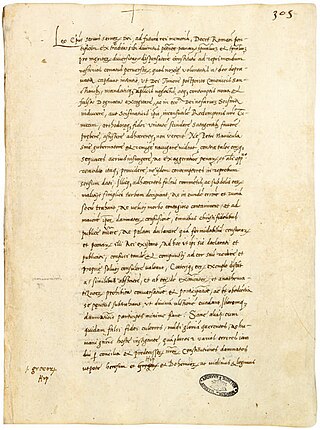
Decet Romanum Pontificem is the papal bull that excommunicated the German theologian Martin Luther; its title comes from the first three Latin words of its text. It was issued on 3 January 1521 by Pope Leo X to effect the excommunication threatened in his earlier papal bull, Exsurge Domine (1520), for Luther had failed to recant. Luther had burned his copy of Exsurge Domine on 10 December 1520, at the Elster Gate in Wittenberg, to indicate his response.

On the Bondage of the Will by Martin Luther argued that people can achieve salvation or redemption only through God, and could not choose between good and evil through their own willpower. It was published in December 1525. It was his reply to Desiderius Erasmus' De libero arbitrio diatribe sive collatio or On Free Will, which had appeared in September 1524 as Erasmus' first public attack on some of Luther's ideas.
Lutheranism as a religious movement originated in the early 16th century Holy Roman Empire as an attempt to reform the Roman Catholic Church. The movement originated with the call for a public debate regarding several issues within the Catholic Church by Martin Luther, then a professor of Bible at the young University of Wittenberg. Lutheranism soon became a wider religious and political movement within the Holy Roman Empire owing to support from key electors and the widespread adoption of the printing press. This movement soon spread throughout northern Europe and became the driving force behind the wider Protestant Reformation. Today, Lutheranism has spread from Europe to all six populated continents.
To the Christian Nobility of the German Nation is the first of three tracts written by Martin Luther in 1520. In this work, he defined for the first time the signature doctrines of the priesthood of all believers and the two kingdoms. The work was written in the vernacular language German and not in Latin.

Martin Luther was a German priest, theologian, author, hymnwriter, professor, and Augustinian friar. He was the seminal figure of the Protestant Reformation, and his theological beliefs form the basis of Lutheranism.

Alfonso de Valdés was a Spanish humanist, who worked at the chancellery of the Emperor Charles V. He was the twin brother of Juan de Valdés.
Jacob van Hoogstraten was a Flemish Dominican theologian and controversialist.
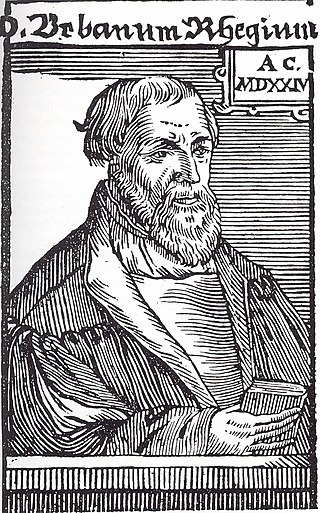
Urbanus Henricus Rhegius or Urban Rieger was a Protestant Reformer who was active both in Northern and Southern Germany in order to promote Lutheran unity in the Holy Roman Empire. He was also a popular poet. Martin Luther referred to him as the "Bishop of Lower Saxony".
Martin Borrhaus was a German Protestant theologian and reformer.
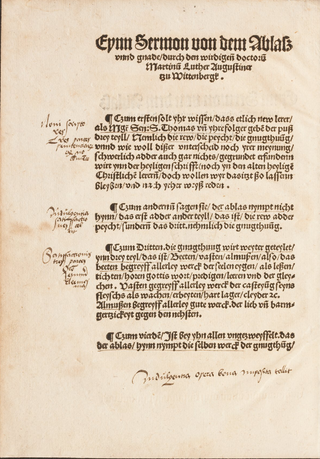
Martin Luther's Sermon on Indulgences and Grace is a pamphlet written in Wittenberg in the latter part of March, 1518 and published in April of that year.